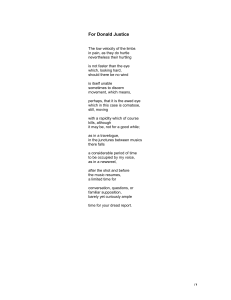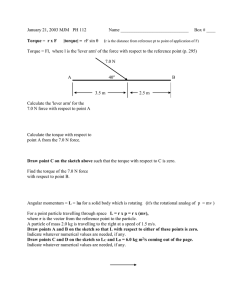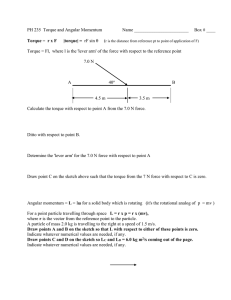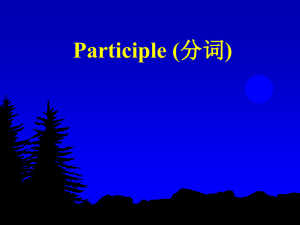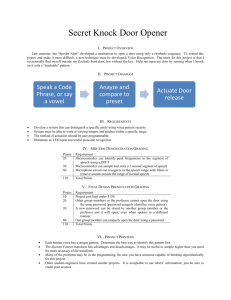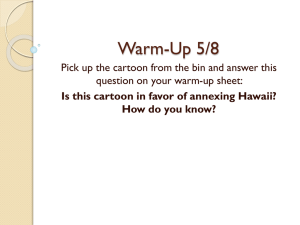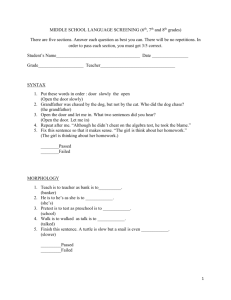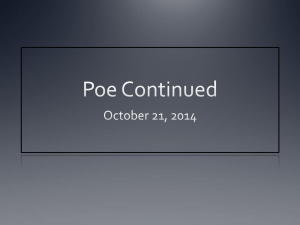science21-27 - Jones College Prep
advertisement
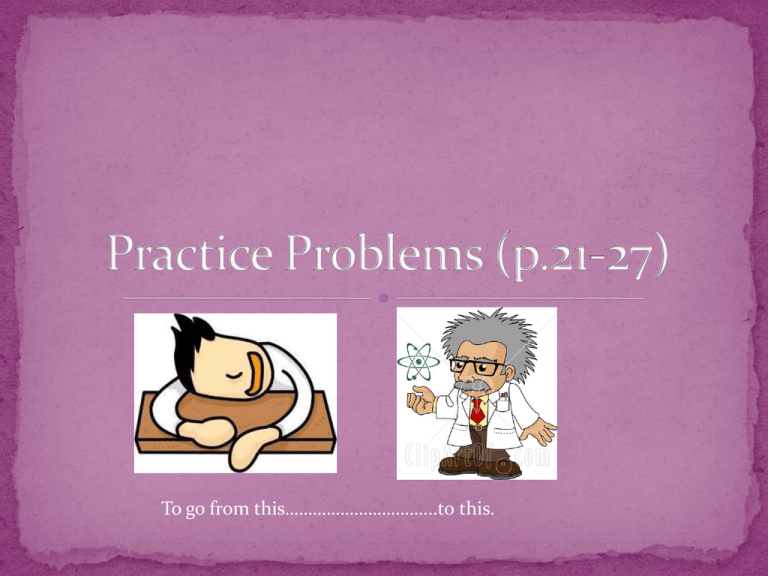
To go from this…………………………...to this. An object experiences a force of 19.97 N for a time period of 4.58 s. What is the impulse of the object? J=F( t) J= 19.97 (4.58) For what time must you exert a force of 45 N to get an impulse of 16 Ns? 16=45(x) X= .36 A 142.5 kilogram motorcycle is moving at a speed of 67.5 m/s. What is the momentum of the cycle? P=mv P=142.5(67.5) What is the momentum of a 23 Kg cannon shell going 530 m/s? P=mv P=23(530) P= 12,190 Judy (mass=40.0 kg) is standing on slippery ice and catches her leaping dog, Atti (mass=15 kg), moving horizontally at 3.0 m/s. What is the speed of Judy and her dog after the catch? mJudyi(vJudyi)+ mAtti(vAtti)= mJudyf(vJudyf )+ mAttif(vAttif ) (40)(0) + (15)(3)= 40 kg V= 0 m/s P= 0 P=0+45 P=45 15 kg V= 3m/s P=45 (15x3) = 55 kg V= 45=55(v) .82 m/s P=45 A 120 kg lineman moving west at 2 m/s tackles an 80 kg football fullback moving east at 8 m/s. After the collision, both players move east at 2 m/s. What is their final momentum? 80 kg V= 8 m/s P= 640 P= 640+-240 =400 120 kg V= -2 m/s P=-240 200 kg V=2 m/s P= 400 Amplitude Period 1. A force of 600 Newtons will compress a spring 0.5 meters. What is the spring constant of the spring? 2. A spring has spring constant 0.1 m/Newton. What force is necessary to stretch the spring by 2 meters? FHooke’s=-k( x) 1. 600= -.5 (x) =-1200 2. F= -.1(2) =-0.2 What is the force required to stretch a spring whose constant value is 100 N/m by an amount of 0.50 m? F Hooke’s =-k( x) F= 100(.50) F=50 N In a hurry to catch a cab, you rush through a frictionless swinging door and onto the sidewalk. The force you exerted on the door was 50N, applied perpendicular to the plane of the door. The door is 1.0m wide. Assuming that you pushed the door at its edge, what was the torque on the swinging door (taking the hinge as the pivot point)? Solution T=(1.0m) (50N) T= 50Nm A force of 20 N is applied perpendicular to the end of a bar of length 0.5 m. Calculate the torque produced by the force. T= (0.5)(20N) T=10Nm


